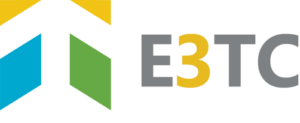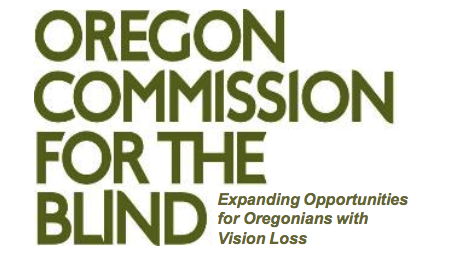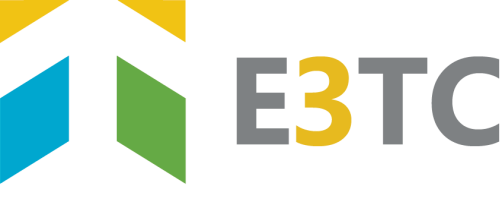
Project E3 – Educate, Empower, Employ Targeted Communities
Project E3 in Oregon
In Oregon, Project E3 is working with the Oregon Commission for the Blind and other state and local partner organizations to improve outreach and employment-related services to underserved individuals with blindness and visual disabilities in rural communities of the state that are economically disadvantaged, including:
- Students and youth aged 14-24 who are transitioning or preparing to transition from high school into a career path/employment
- Adults who are blind or have other visual impairments that affect their ability to become or remain employed
Transportation Resources
Oregon Transportation Resources
Calendar of Events
Learn more about Transition
Transition 101 Module: What we all need to know about transition
Transition 201 Module: The Expanded Core Curriculum
Benefits Workbook: How will employment impact benefits PDF
Assistive Technology
Devices and technology for employment, education, and independence
Media
Project activities are targeted in two regions of the state:
- Southwest Oregon (including Jackson, Josephine, Klamath, and Douglas Counties)
- Central Oregon (including Crook, Jefferson, and Deschutes Counties)


Project E3 is Partnering with the Oregon Commission for the Blind
The Oregon Commission for the Blind was established in 1937 as a state agency to provide services to Oregonâs citizens who experience vision loss and need specialized training and support to live full and productive lives. The Commission is committed to:
- Helping Oregonians who are blind get and keep jobs that allow them to support themselves and their families
- Supporting Oregon businesses in hiring and retaining qualified job seekers who are blind in their workforce
- Supporting youth who are blind in the transition from high school into a career path/employment
- Training Oregonians in the alternative skills related to blindness such as adaptive technology, white cane travel, braille and activities of daily living
- Helping seniors and individuals with vision loss who are unable to work live with the highest levels of independence and self-sufficiency so that they can remain independent in their homes and active in their communities
- Licensing and supporting business owners who operate food service and vending operations in public buildings and facilities throughout the state

Oregon Disabilities Commission Partnership
The Oregon Disabilities Commission (ODC) is a Governor-appointed commission housed in the Department of Human Services, composed of 15 members broadly representative of major public and private agencies who are experienced in or have demonstrated particular interest in the needs of individuals with disabilities. A majority of the members are individuals with disabilities. The ODC acts as a coordinating link between and among public and private organizations serving individuals with disabilities, with the mission of securing economic, social, legal and political justice for individuals with disabilities through systems change.
Project E3 Goals in Oregon
- To expand employment opportunities for individuals who are blind or have visual disabilities by implementing and providing technical assistance on promising practices, knowledge, and experience.
- To increase the number of individuals applying for and achieving employment through Vocational Rehabilitation services with the Oregon Commission for the Blind.
- To increase awareness and access to the services of the Oregon Commission for the Blind among Oregonians who are blind or have visual disabilities, employers, and communities, in order to promote employment outcomes.
How are Project E3 and the Oregon Commission for the Blind achieving these goals?
In the next year, Project E3 will be conducting the following activities with our Project and Community Partners in Southwest Oregon. Please check back for updates as dates, locations, and our web-based resources become available:
- Identification and Outreach to individuals who are blind or have visual disabilities, employers, schools, independent living, and community partners. (If you or your agency would like more information, or would like to be a source of information in your community, please contact us)
- Increasing Employment Opportunities through Business Engagement
- Brief, Accessible Videos and Resources on Rehabilitation and Assistive Technology
- Vocational Rehabilitation and Employment Counselor Trainings
- Technical Assistance to Address Transportation Barriers
- Web-Based Resources for Transition aged youth / Parents/ Educators on topics including:
- Transition for Students with Significant Disabilities
- Predictors of Successful Transition for Students
- Preparing Students with Disabilities for Successful Transition to Employment
- Overview of Disability Benefits & Employment
- Grant Writing Training for Individuals and Non-Profits
- Self-Employment and Home-Based Employment Opportunities Training
Blindness, Visual Disability, and Employment in Oregon
- Approximately 100,000 Oregonians report blindness or serious difficulty seeing even when wearing glasses.
- The percentage of working-age people with vision disabilities working full-time in Oregon is about 21%, compared to 54% of Oregonians without a disability*
- The median earnings of working-age people with vision disabilities who worked full-time are about $35,000, compared to around $45,000 for working-age people without disabilities*
- About 1-in-3 working-aged Oregonians with vision disabilities live in poverty, compared to about 13% of working-age people without disabilities.
- There are generally fewer jobs per person for those living in rural Oregon compared with those in urban areas, and a smaller percentage of the population in rural counties is involved in the labor force. Average wages in rural Oregon tend to be lower than in urban areas of the state.
*based on American Community Survey data, 2015
Follow us on Facebook: E3TCKentucky
Please take this very brief survey to provide feedback on HDI E3TC website. Thank you!

The contents of this website were developed with support from the Vocational Rehabilitation Technical Assistance Center for Targeted Communities (VR TAC TC: Project E3) at the Department of Rehabilitation and Disability Studies, Southern University, Baton Rouge, LA through a subcontract to the University of Kentucky, funded by the U.S. Department of Education, Rehabilitation Services Administration (Grant# H264F15003). Any opinions, findings, and conclusions or recommendations expressed in this material are those of the author(s) and do not necessarily reflect the views of the U. S. Department of Education or SUBR.
